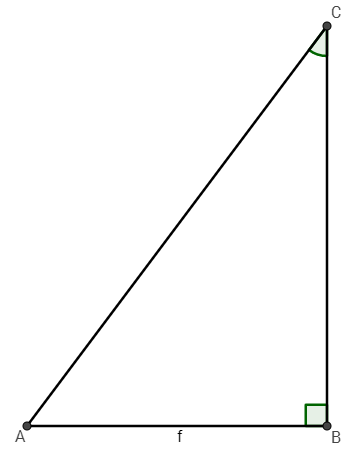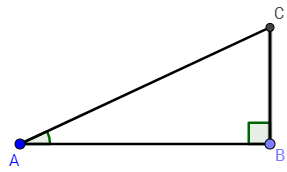Hello! That's quite an interesting expression you got there of \((a-7)^2-2(a-7)(a+7)+a+7\). Let's simplify it the we can.
| \((a-7)^2-2(a-7)(a+7)+a+7\) | First, let's deal with \((a-7)^2\) by knowing the expansion of a binomial squared. In general, it is \((x-y)^2=x^2-2xy+y^2\). |
| \((a-7)^2=a^2-14a+49\) | |
| \(a^2-14a+49-2(a-7)(a+7)+a+7\) | Now, let's expand \((a-7)(a+7)\) by using the following rule again of \((x+y)(x-y)=x^2-y^2\). |
| \(-2(a-7)(a+7)=-2(a^2-49)\) | Distribute the -2 to both terms in the parentheses. |
| \(-2(a^2-49)=-2a^2+98\) | |
| \(a^2-14a+49-2a^2+98+a+7\) | Let's rearrange the equation such that all the terms with the same degree are adjacent. |
| \(-2a^2+a^2-14a+a+98+49+7\) | Now, simplify. |
| \(-a^2-13a+154\) | |
Therefore, \((a-7)^2-2(a-7)(a+7)+a+7=-a^2-13a+154\).
For A, I think I know why it is not working properly. You appear to have done everything correctly, so I presume that there is a silly computational error.
1. Determine the Midpoint of Both Coordinates
The midpoint is the average of both x- and y- coordinates. In algabraic terms, the formula is \(\left(\frac{x_1+x_2}{2},\frac{y_1+y_2}{2}\right)\). Let's use it! You used this formula correctly, as I can tell. For completeness, I'll calculate it also.
| \(\left(\frac{x_1+x_2}{2},\frac{y_1+y_2}{2}\right)\) | Now, just plug into the formula. |
| \(\left(\frac{3+6}{2},\frac{3+2}{2}\right)\) | Now, simplify both sides. |
| \(\left(\frac{9}{2},\frac{5}{2}\right)\) | |
2. Determine Slope (or Gradient) of the Segment
This also has a formula, luckily, and all we have to do is plug the coordinates in. It is \(m=\frac{y_2-y_1}{x_2-x_1}\), where m is the slope of the segment. Let's just use the formual to determine the slope.
| \(m=\frac{y_2-y_1}{x_2-x_1}\) | When using this formula, it is essential to plug in the x- and y-coordinates in the same order. Otherwise, you will get the incorrect result. |
| \(m=\frac{3-2}{3-6}\) | Now, simplify the numerator and denominator. |
| \(m=-\frac{1}{3}\) | |
This is not the slope of the perpendicular bisector but rather the slope of the original 2 segments.
3. Determine The Slope of Perpendicular Bisector
A line that is perpendicular to a segment has a slope that is opposite and reciprocal to the slope of the original segment. What does that mean? Well, let's deal with the current slope as its example of \(-\frac{1}{3}\).
I find doing the reciprocal of a number first is generally easier, but the order in which you do the next steps do not matter. In general, the reciprocal of a number follows tthe following rule of \(a\Rightarrow\frac{1}{a}\). Let's apply that now with our slope. \(-\frac{1}{3}\Rightarrow-\frac{1}{\frac{1}{3}}=-3\)
Now, find the opposite. To do this, use the rule that \(a\Rightarrow-a\). \(-3\Rightarrow3\).
Therefore, \(3\) is the slope of the perpendicular bisector.
If you are interested, here is another method to obtain the slope of the perpendicular bisector. If you take the original slope of the segment and multiply it by the slope of the perpendicular bisector, you will get -1. Let's see this in action!
| \(-\frac{1}{3}m=-1\) | Multiply by -3 on both sides. |
| \(m=3\) | |
Look at that! you get the same answer.
4. Use Point-Slope Form
There are 2 methods again to get to the final equation of the slope, but I generally like point-slope form for some reason, but I will demonstrate both to you, so that you can choose your method. Point-slope form is the following:
\(y-y_1=m(x-x_1)\) where \((x_1,y_1)\) is a point on said segment or line and m is the slope of said segment or line. We know what segment is on this perpendicular bisector; we already calculated it. The perpendicular bisector is a segment that both intersects a segment at its midpoint and at a perpendicular angle. We have already calculated the midpoint of BC, which is \(\left(\frac{9}{2},\frac{5}{2}\right)\). We also know the slope, which is 3. Since we have all that information, let's plug it in!
| \(y-y_1=m(x-x_1)\) | As aforementioned, plug all the information we know into the equation. |
| \(y-\frac{5}{2}=3\left(x-\frac{9}{2}\right)\) | Now, we are transforming this equation to slope-intercept form. To do that, let's distribute the 3 to both sides. |
| \(y-\frac{5}{2}=3x-\frac{27}{2}\) | We know that we must do some manipulation with the fraction. |
| \(y-\frac{5}{2}=3x+\frac{-27}{2}\) | Now, add \(\frac{5}{2}\) |
| \(y=3x-11\) |
This is the equation of the perpendicular bisector. I'm not sure where you went wrong, unfortunately, but it seems to me that it is probably some silly computational error. That's all.
Another method of doing this is using the slope-intercept form from the beginning. Let's see how that would work:
| \(y=mx+b\) | We know what the slope is; it is 3, so let's plug that in. |
| \(y=3x+b\) | Now, plug in a point that we know is on the perpendicular bisector. We know that \(\left(\frac{9}{2},\frac{5}{2}\right)\) is a point, so plug it in. |
| \(\frac{5}{2}=\frac{3}{1}*\frac{9}{2}+b\) | Now, solve for b. |
| \(\frac{5}{2}=\frac{27}{2}+b\) | Subtract 27/2 on both sides. |
| \(b=-\frac{22}{2}=-11\) | Therefore, the equation becomes the following. |
| \(y=3x-11\) | This should look very familiar to what we determined above. |
Hopefully, this helped to find the segment that is the perpendicular bisector.
Now, it is time to do B. Thankfully, this will not be as time-consuming as generating this repsonse has taken me hours. The point you want me to identify is called the circumcenter of the triangle. it is the point located at the center of a circle such that circle contains all the points in a triangle. The circumcenter of a triangle can be found by finding the intersection of 2 of the perpendicular bisectors! Let's do that. We already know 2 lines and their respective equations. They are \(y=3x-11\) and \(y+2x=4\). Let's set up a system of equations.
{ \(y=3x-11\)
{ \(y+2x=4\)
I will use substitution in this case as we already know what y equals.
| \(3x-11+2x=4\) | Combine the like terms on the left-hand side. |
| \(5x-11=4\) | Add 11 to both sides. |
| \(5x=15\) | Divide by 5 on both sides to get the corresponding x-coordinate. |
| \(x=3\) | |
Now, plug in x into one of the equations. I think that equation 1 will be easier, so I will use that!
| \(y=3x-11\) | Plug in for x, which is 3. |
| \(y=3*3-11=9-11=-2\) | |
Therefore, the circumcenter of the triangle is \((3,-2)\).
If you would like, click here to view a graph of the triangle, its respective lines that are perpendicular bisectors and the circumcenter.
\(35*35=1225\)
I believe you want an easier method to work out problems like these where you square a number. Here is an idea for you.
\(35^2=?\)
When you square a number, this is a trick you can use! Round the number to the nearest multiple of 10. In this case, that is 30. Now, go up by the distance you went down. In this example, you went down by 5 to get to 30. Now, go up 5 to get to 40. Now multiply them together.
This should be much simpler now. \(30*40=1200\). All you need to do now is to add the square of the distance. In this case, it is \(5^2=25\).
\(1200+25=1225\)
That's much easier, don't you think? In fact, this is usually so easy that you may be able to do it mentally.
But why does it work? Well, that is actually easier to explan than you may think. Let's call the number we want to square A. Let's call the distance we want to go up and down d. Therefore, we get the following equation:
| \(A^2=(A-d)(A+d)+d^2\) | Now, expand the multiplcation of 2 binomials. |
| \(A^2=A^2-d^2+d^2\) | Now, simplify. |
| \(A^2=A^2\) | |
This means that no matter what distance you pick, you will eventually make it the original number squared. That's pretty cool!
For the purposes of this problem, I will assume "when you are given one of the sides and an angle" means an angle other than the right angle. Another assumption I am making is that one of the given side lengths is not the hypotenuse as I doubt you would ask for the length of the hypotenuse if you already knew its side length. If these conditions are true, there are still 2 possibilities. I have created a diagram for both scenarios. Here they are:

Let's assume that \(AB=6\) and \(m\angle C=35^{\circ}\). Now, let's "solve" the triangle. "Solving" the triangle means to figure out all the missing side lengths and angle measures. Let's start with the easy one first. You can use the triangle sum theorem to figure out what the measure of the angle located at vertex A:
| \(m\angle A+m\angle B+m\angle C=180\) | This is what the triangle sum theorem says; the sum of the measures of the angles in a triangle will equal 180 degrees. Now, plug in the angle measures that we already know. |
| \(m\angle A+90+35=180\) | Let's simplify the left-hand side of the equation by combining the like terms. |
| \(m\angle A+125=180\) | Finally, isolate the measure of angle a to figure out its exact measure. |
| \(m\angle A=55^{\circ}\) | |
The next part requires the knowledge of right-triangle trigonometry. Let's review that quickly. I understand that
\(\frac{\sin \textcolor{\green}\alpha}{1}=\frac{\textcolor{red}{\text{opposite}}}{\textcolor{blue}{\text{hypotenuse}}}\)
\(\frac{\cos \textcolor{green}{\alpha}}{1}=\frac{\textcolor{red}{\text{adjacent}}}{\textcolor{blue}{\text{hypotenuse}}}\)
\(\frac{\tan \textcolor{green}{\alpha}}{1}=\frac{\textcolor{red}{\text{opposite}}}{\textcolor{blue}{\text{adjacent}}}\)
Since we know that \(AB=6\) and \(m\angle C=35^{\circ}\), we should use the sine function to calculate the length of the hypotenuse and the tangent function for the angle adjacent to the known angle. Let's solve for the hypotenuse!
| \(\frac{\sin \textcolor{\green}\alpha}{1}=\frac{\textcolor{red}{\text{opposite}}}{\textcolor{blue}{\text{hypotenuse}}}\) | We know the measure of the angle, and we know the measure of the opposite side length. |
| \(\frac{\sin \textcolor{green}{35^{\circ}}}{1}=\frac{\textcolor{red}{\text{6}}}{\textcolor{blue}{\text{AC}}}\) | Multiply by the length of AC on both sides. |
| \(AC\sin 35^{\circ}=6\) | Now, divide by \(\sin 35^{\circ}\). |
| \(AC=\frac{6}{\sin 35^{\circ}}\) | \(\frac{6}{\sin 35^{\circ}}\) is the exact measure of the hypotenuse. By isolating its measure, we can now input it into a trusty scientific calculator (like the one provided on this Web site!) to obtain its approximate length. Be sure that the calculator is set to degree mode. |
| \(AC=\frac{6}{\sin 35^{\circ}}\approx10.46\) | Generally, rounding to the hundredths place is a sufficient estimation. |
Now, let's solve for the other side length. This time, we will need the tangent function.
| \(\frac{\tan \textcolor{green}{\alpha}}{1}=\frac{\textcolor{red}{\text{opposite}}}{\textcolor{blue}{\text{adjacent}}}\) | Let's do the exact same process of plugging in and isolating. |
| \(\frac{\tan \textcolor{green}{35^{\circ}}}{1}=\frac{\textcolor{red}{6}}{\textcolor{blue}{BC}}\) | |
| \(BC\tan 35^{\circ}=6\) | |
| \(BC=\frac{6}{\tan 35^{\circ}}\approx8.57\) | |
We have solved the triangle because we have found all the missing side lengths and angle measures. However, there is 1 scenario that we have not covered yet. However, the process is the same. Here is the diagram, with AB=5 and \(m\angle A=25^{\circ}\). You will notice that this is different that the first diagram.

Let's find the easy one again: the measure of the angle of C:
| \(m\angle A+m\angle B+ m\angle C=180\) | |
| \(25+90+m\angle C=180\) | |
| \(115+m\angle B=180\) | |
| \(m\angle B=65^{\circ}\) | |
Oh wait! Now, this looks the exact same as the 1st triangle because we know the measure of the angle across from the known side length. Therefore, to solve this triangle, you would use the exact same process as done above.